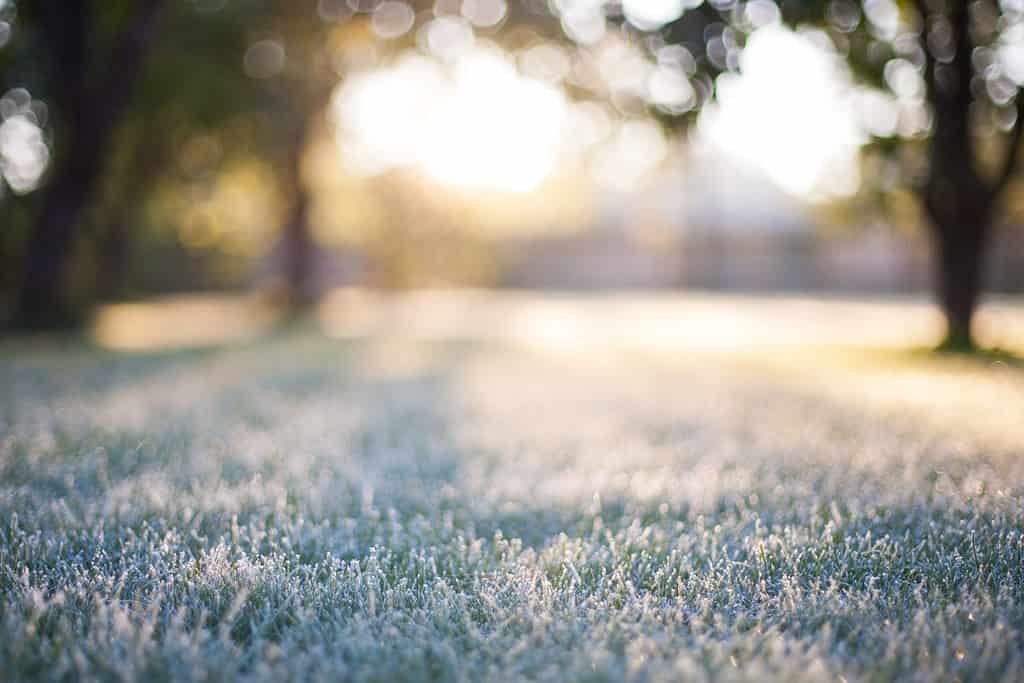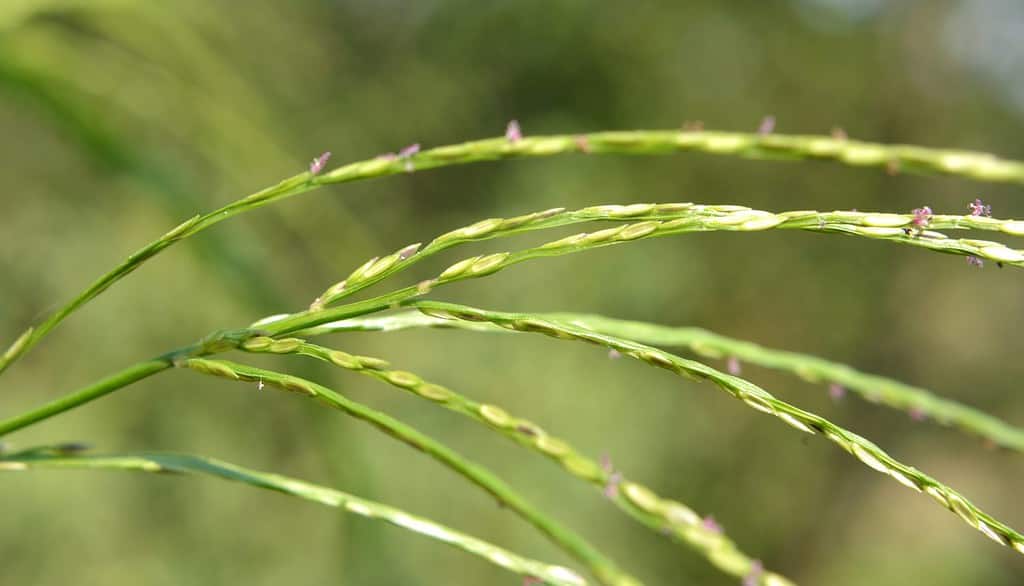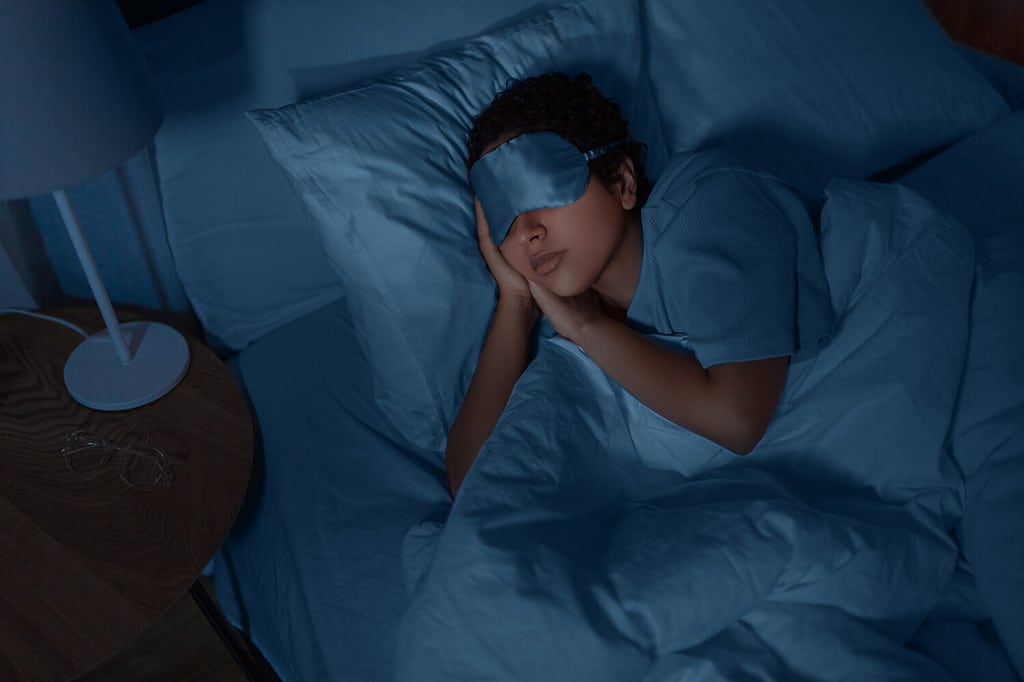It’s an eyesore even when there’s just a single patch of it. It can soon take over your entire lawn if you let it. Crabgrass destroys your lawn’s health and the speed with which it spreads is mind-boggling. A single crabgrass plant can produce 150,000 seeds! You may not see it once temperatures start to drop, but do you know why? Discover what happens to crabgrass in the winter. Plus, learn how to get rid of it!
Discover What Happens to Crabgrass in the Winter
1. The First Frost

After the first frost, crabgrass dies. But not before dropping seeds!
©Evoque Arte/Shutterstock.com
Considering it’s a summer annual grass, you can imagine what happens when winter rolls around. As soon as temperatures drop sufficiently, crabgrass dies. You can typically watch as it disappears after the first frost. This may occur at the start of winter or a little earlier at the end of fall.
It may feel like a relief knowing that the crabgrass is no longer present during cold days in the winter, but it doesn’t just go away on its own. Crabgrass is notorious for proliferating and returning as if its demise in winter is just a distant memory. It’s not the mature plants that return, however.
2. Seeds Drop

Mature crabgrass plants drop seeds before dying off at the start of winter.
©Orest lyzhechka/Shutterstock.com
Before crabgrass dies off completely at the start of winter, it starts dropping seeds. This is its last attempt to ensure a continued life cycle (which is impressive for crabgrass — but annoying for you). The seeds dropped just before the crabgrass dies settle into the soil to wait out the cold temperatures for a few months.
3. Seeds Remain Dormant

Crabgrass seeds go unnoticed as they lie in wait, dormant throughout the winter months.
©Ground Picture/Shutterstock.com
Continuing with its impressive resiliency, crabgrass seeds remain dormant. From your perspective, you see the crabgrass die, you can’t see the seeds, and you don’t realize that they are just lying in wait. They’re just hanging out, patiently awaiting the warm spring days ahead so that they can germinate and start growing.
4. Crabgrass Returns

When spring rolls around, crabgrass seeds germinate and grow.
©Lightspring/Shutterstock.com
After the period of dormancy and germination, crabgrass is alive and well again on your lawn. It has effectively started a new life cycle and will continue this process unless you take a couple of specific actions to properly get rid of it.
How to Get Rid of Crabgrass
Crabgrass is persistent and even if you take all the necessary measures, in really high-traffic areas, it’s possible for crabgrass to spring right back up. Timing is vital. Once it starts growing, you have to address it quickly. Below are a few tips for getting rid of crabgrass.
Mow More Frequently Than You Think You Should
While you can always clip the seed heads of crabgrass, you have to be careful and properly dispose of these grass clippings in your trash bin. Anywhere else and you’re basically spreading the problem. What’s most important is that you mow more frequently. It’s a pain, especially if you have a large yard but this is a great strategy for ensuring these plants are unable to reach maturity.
Use Helpful Herbicides
It’s also a good idea to employ a good herbicide like Quinclorac. This product packs a punch and you can pick it up in a 7.5-ounce bottle. You can combine it with another weed control product or just use it on its own. Since you’re probably going to be focusing on specific spots about your lawn, this product will be more than enough to help you cover all the space. The caveat here, however, is that you need to move fast before the crabgrass has matured. Once it’s matured, this product is not nearly as effective.
Employ Patience
Although you may want to eliminate your crabgrass problem in a year, it’s often not possible. You can expect the problem to persist for a couple of years before you really get a handle on it. On average, most find that it takes between two and three years to get rid of crabgrass on their lawn. As you treat the problem areas, make sure to keep track of the progress.
It could be hard to see how much things are improving unless you keep some records. Just snap a couple of photographs and compare them year by year to see how things are going. Another good idea while you’re treating your lawn for crabgrass is to keep people from walking on those problem spots. Limiting foot traffic helps as you work on eliminating these stubborn lawn weeds.
The photo featured at the top of this post is © iStock.com/Yesim Sahin
Thank you for reading! Have some feedback for us? Contact the AZ Animals editorial team.






